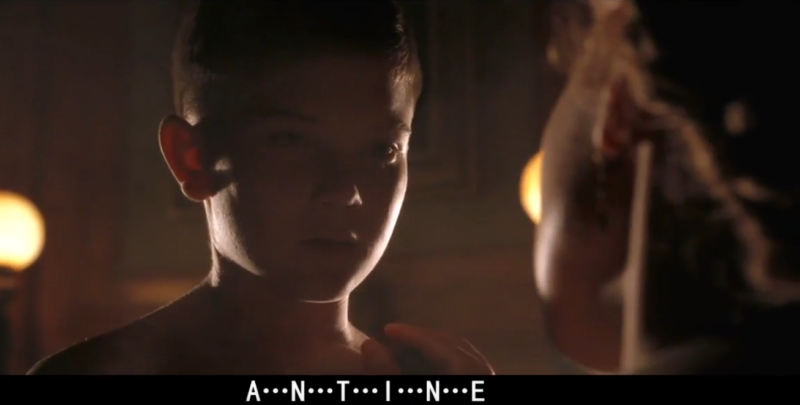Allene Hughes: “Q-u-a-r-a-n-t-i-n-e”
Howard Hughes: “Quarentine. Q.u.a.r.e.n.t.i.n.e. Quarentine”
(Opening scene of the Martin Scorcese film, The aviator)
In the midst of the quarantine in which we find ourselves, I have found an extraordinary interview with Martin Scorsese in which he tells us about the impact produced by reading the first scene with which the script by John Logan begins.[1] Let us recall that we see Allene Hughes bathing her son Howard in a dimly lit room. We know that Allene suffered from a phobia of microbial contamination and used to exhaustively examine the child’s naked body. She checked his bowel movements daily and when washing him rubbed his entire body with a powerful bleach soap.
But, what most caught Scorsese’s attention was that the signifier “quarantine” was going to be, from then on, “the key phrase in his life”, that is, the master signifier by which he would have to deal with a crazy Other that devoured everything, which was going to launch him on a mission to build increasingly powerful aircraft to escape germs and record major film projects in which air battles had a central role. A passion for the construction of an alethosphere had to follow a plan as rigorous as that of putting order into the spare parts from which a tongue is made.
The Howard Hughes story teaches us that, in the case of speaking beings, the illness suffered is that which is introduced into the living by the parasitism of the signifier. Indeed, life is not affected only by this or that virus or other natural agents, it is also affected by a singular parasitism: language. As Scorsese points out, Hughes’ case is paradigmatic when he sees how the organism of a speaking being is left prey to that strange predator of a ‘lenguajero’ [2] that proliferates at his expense.
The Aviator has the enormous merit of evoking that infection that Jacques Lacan talks about. Hughes lived it at a very early age: he had to learn to defend himself from a word “q.u.a.r.e.n.t.i.n.e” spelled out by his mother while bathing him in the middle of a cholera epidemic in a large part of Mississippi. What Scorsese shows us throughout the film is that Hughes found himself obliged to insert this signifier into a series of short, syncopated phrases, which he had to compulsively repeat, striving to keep it in mind from a very early age in which he was just beginning to master writing.
We see in this film – in my opinion the most successful cinematic approach to psychosis – how, in the various triggers of his crises, Hughes used monotonous chants, lacking expressivity, to temper the virulence of the symbol and to ease the burning produced by language. We also see how in these crises Hughes responded to the pain of existing that he was prey to with the parasite signifier and his particular way of treating the traumatism inflicted by language on his being.
Finally, Scorsese’s film contrasts with the popularization of the OCD among the American public, thanks in part to the success of books like “The Boy Who Couldn’t Stop Washing”[3] and “Just Checking”[4]. The value of the film resides in the fact that it does not reduce Hughes’ mental life to a catalogue of empirically verifiable symptoms that must be treated by means of medication and “conscious anticipation” techniques. Scorsese shows us that mental illness cannot be reduced to a set of phobias and that, confronted with the clinic, cinema can manage to convey the way in which every human being tries to come to terms with illness and subjectivity.
Translated by Roger Litten
[1] The Aviator: Audio Commentary with Martin Scorsese, Thelma Schoonmaker and Michel Mann.
[2] Neologism in Spanish condensing ‘language’ and ‘hole’
[3] Rapoport, Judith, L., The Boy Who Couldn’t Stop Washing: The Experience and Treatment of Obsessive-Compulsive Disorder, E.P. Dutton, 1989.
[4] Kaminsky, Stuart, M., The Howard Hughes Affair, Open Road Media, Ebook
Originally published in Spanish in Zadig España. Available online.

